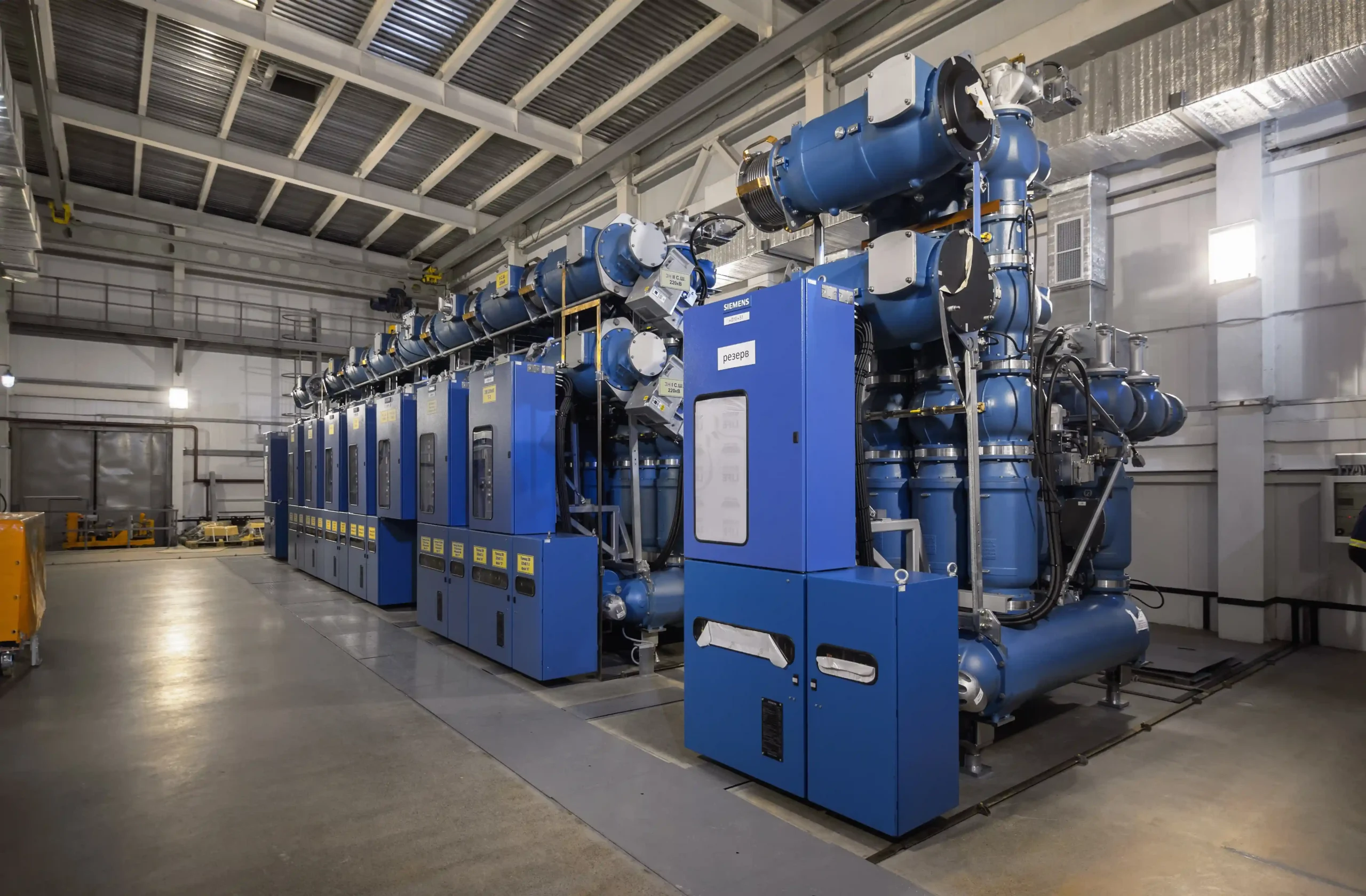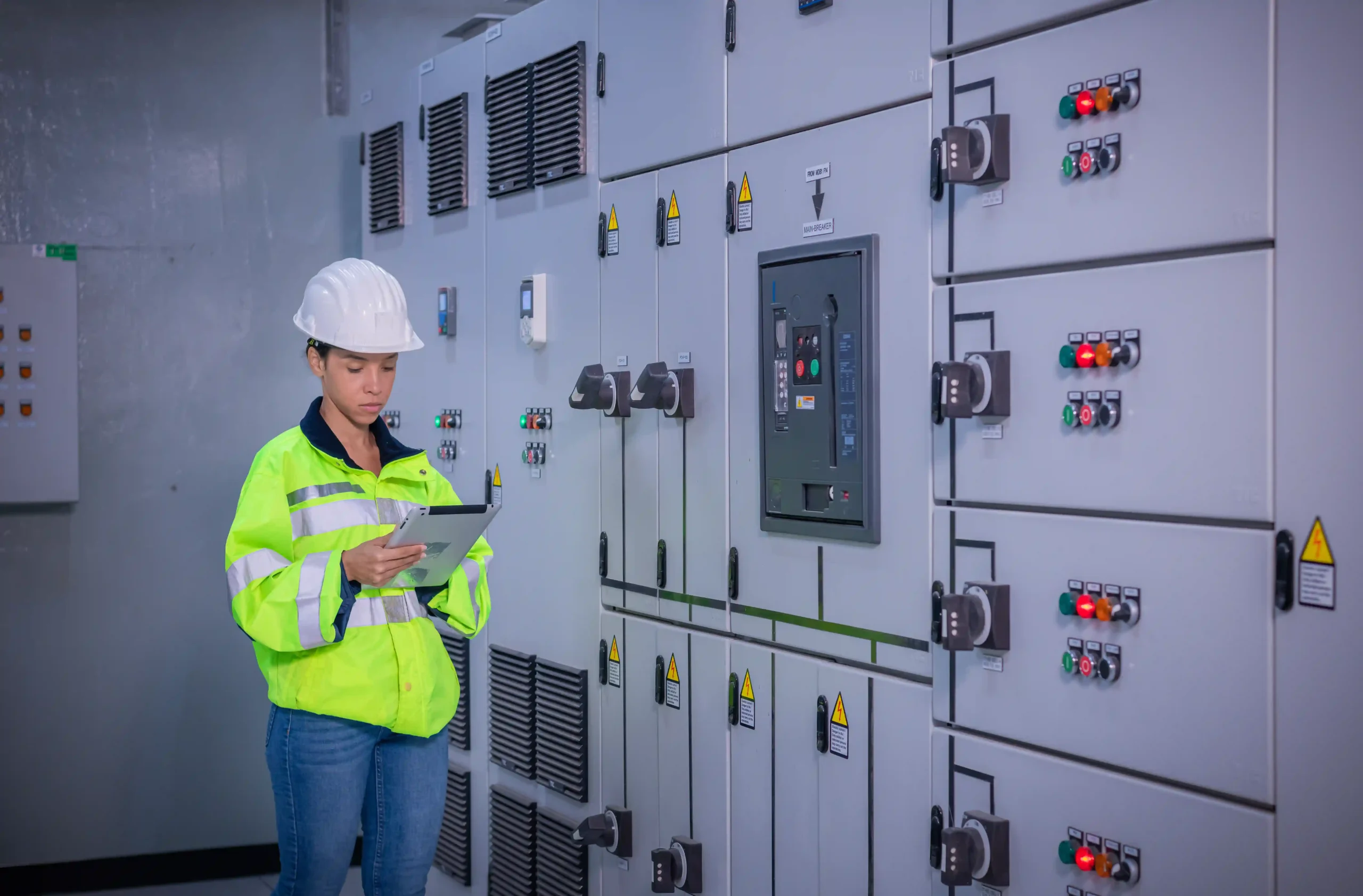Have you ever wondered how advanced gas-insulated switchgear (GIS) monitoring helps utilities maintain grid stability while keeping operations compact, efficient, and reliable, even in harsh environments? At its core, gas-insulated switchgear is a compact electrical system enclosed in a metal housing and insulated with sulfur hexafluoride (SF6) gas instead of air.
This design makes GIS ideal for space-constrained environments, offering high reliability and operational efficiency.
Consequently, the adoption of GIS is expanding rapidly as utilities seek compact, reliable, and low-maintenance solutions for their modern substations. According to Future market insights, the global gas-insulated switchgear market is valued at approximately USD 28.1 billion in 2025 and is projected to nearly double, reaching USD 59.6 billion by 2035. This robust growth, at a compound annual growth rate (CAGR) of 7.8%, is driven by factors such as rapid urbanization, expanding industrial activities, and increasing demand for reliable and efficient power distribution systems.
However, GIS faces operational challenges that can affect its performance and reliability. To address these issues, condition monitoring plays a crucial role. Condition monitoring continuously tracks the parameters of gas-insulated switchgears, enabling the detection of problems before they escalate into catastrophic failure. By facilitating timely maintenance and proactive fault management, GIS monitoring minimizes downtime, extends the lifespan of equipment, and ensures the safety and stability of critical electrical infrastructure.
In this blog, we’ll take a closer look at what gas-insulated switchgear monitoring is and how it works to enhance grid performance.
What is Gas Insulated Switchgear Condition Monitoring?
Gas-insulated switchgear condition monitoring continuously tracks the health, performance, and safety parameters of the equipment to ensure optimal operation. It monitors key parameters, such as SF6 gas leakage, partial discharge, and insulation integrity, in real-time.
Traditional inspection methods often fail to detect internal defects that are hidden within sealed enclosures. Therefore, instead of relying on scheduled maintenance or manual inspections, GIS monitoring offers continuous visibility, enabling utilities to prolong the lifespan of their assets.
Common Failure Modes in GIS and Early Warning Signs
Before understanding how GIS condition monitoring works, it’s important to grasp the major failure modes these systems target:
- Partial Discharge (PD): PD is an electrical discharge occurring in microscopic voids or gaps within insulation. It’s the most important early indicator of insulation breakdown.
- SF6 Gas Leaks: Loss of insulating gas or contamination with moisture or decomposition products severely compromises dielectric strength.
- Thermal Overstress: Overheating due to contact resistance or excessive load causes insulation aging and mechanical damage.
- Mechanical Failures: Contact wear, breaker mechanism jamming, or misalignment that can lead to operational failure.
- Gas Quality Issues: Degradation leads to the formation of toxic compounds, causing corrosion and insulation deterioration.
Early detection of these problems is crucial in preventing catastrophic failures that can result in extended service outages and extremely costly repairs.
How Does GIS Condition Monitoring Work?
GIS condition monitoring systems follow a comprehensive, integrated workflow to ensure early fault detection and actionable insights:
-
Sensor Installation
Sensors are strategically installed inside and on the external components of GIS equipment. These include UHF antennas, acoustic sensors, fiber optic temperature probes, gas pressure and humidity sensors, and mechanical vibration detectors.
-
Data Acquisition
Data from these sensors is collected continuously or periodically through rugged data acquisition units. The data typically comprises electrical signals, acoustic emissions, temperature profiles, gas parameters, and mechanical status.
-
Data Transmission and Storage
The raw sensor data is transmitted to local or cloud-based servers via industrial communication protocols, ensuring secure and high reliability for real-time analysis.
-
Data Analysis and Diagnostics
Advanced signal processing algorithms filter noise and extract meaningful indicators such as PD pulse amplitude, gas density trends, hotspot temperature spikes, or mechanical anomalies. Machine learning and AI-based models enhance trend predictions and failure prognostics.
-
Alerting and Decision Support
When thresholds are exceeded or fault patterns are detected, alerts are generated and sent to maintenance teams via dashboards, emails, or mobile apps. These early warnings enable condition-based maintenance decisions, replacing calendar-based schedules with needs-driven interventions.
-
Integration and Predictive Execution:
Maintenance actions are prioritized based on risk and cost-benefit analysis. Advanced monitoring systems support integration with Asset Performance Management (APM) platforms. This supports predictive maintenance planning and reduces unplanned downtime.
Implementing Monitoring Strategy
A successful GIS condition monitoring program starts with:
- Asset Assessment: Prioritize critical GIS units based on age, loading, and failure risk.
- Technology Selection: Choose monitoring technologies that match your GIS design, environment, and operational objectives, from basic on-off alert systems to comprehensive online monitoring suites.
- Installation: Start with pilot installations to validate sensor performance and software analytics.
- Training & Change Management: Train personnel to interpret data, respond to alerts, and integrate monitoring into existing workflows.
- Continuous Improvement: Regularly review monitoring effectiveness, update configurations, and leverage new technologies such as AI analytics.
This structured approach maximizes ROI and operational impact.
Key GIS Condition Monitoring Technologies
Modern GIS condition monitoring combines multiple advanced technologies:
- UHF and Acoustic PD Detection: UHF sensors are installed inside or on the outer surfaces of the GIS compartments, where they capture ultra-high-frequency electromagnetic signals generated by PD events. On the other hand, acoustic sensors are mounted on the external walls of compartments such as busbars or circuit breakers to detect the sound waves produced by internal discharges. Together, these sensors provide early warnings of insulation deterioration, helping utilities prevent breakdowns and maintain reliable operation.
- SF6 Gas Leakage Detection: Measures critical parameters such as SF6 gas pressure, density, and moisture to evaluate insulation health. Sensors are mounted on each gas compartment of the GIS to monitor changes in gas conditions continuously. This enables timely detection, ensuring optimal dielectric strength and compliance with environmental regulations.
- Fiber Optic Temperature Sensors: Fiber optic temperature sensors deliver precise, interference-free temperature readings across key components such as conductors, contacts, and busbars. Installed directly on cables, termination joints, and busbars, these sensors track temperature variations to identify localized heating or developing hotspots. By detecting abnormal temperature rises early, they help reduce the risk of thermal stress and extend the life of equipment.
- Data Analytics: Cloud-based analytics platforms and AI/ML algorithms analyze data collected from all GIS sensors. These systems identify trends, detect anomalies, and generate predictive maintenance alerts well in advance of a fault occurring. By transforming data into actionable insights, AI-driven analytics empower utilities to make informed, condition-based maintenance decisions.
These technologies work seamlessly to provide actionable intelligence and reduce unplanned outages.
Empowering Industries Through GIS Condition Monitoring
GIS condition monitoring is critical across industries that rely on secure and uninterrupted electrical power:
- Industrial Complexes
For facilities such as petrochemical plants, manufacturing units, refineries, steel plants, and data centers, GIS monitoring ensures a steady and uninterrupted power supply. This is essential for maintaining safety and operational continuity in mission-critical processes. - Substations
Whether located in dense cities, remote valleys, or mountainous regions, GIS monitoring in high-voltage and distribution substations is essential for real-time performance tracking and preventing outages in critical grid nodes. - Renewable Energy Projects
GIS is increasingly deployed in renewable energy setups, such as wind and solar farms. Monitoring ensures reliable power generation and seamless integration into the grid, even under fluctuating environmental conditions. - Transport and Infrastructure
In railways, metro systems, and other large infrastructure networks, GIS monitoring ensures stability and efficiency where compact, durable, and low-maintenance switchgear solutions are required.
Each industry needs tailored solutions, ensuring robust performance even in the most challenging environments.
Benefits of GIS Condition Monitoring
a. Enhanced Safety: No Fire Hazards
Unlike air-insulated switchgear, which relies on atmospheric air, GIS uses SF₆ gas, a non-flammable, non-explosive, and arc-extinguishing medium. This makes GIS inherently safer in high-voltage environments.
When coupled with real-time monitoring, the system can:
-
- Detect SF₆ leaks early (preventing pressure loss or exposure risks)
-
- Identify hotspots before thermal runaways or arcing occur
-
- Eliminate fire hazards caused by overheating or insulation failure
This ensures maximum personnel and asset safety, a key priority for utilities and industrial substations.
b. Improved Reliability and Availability
GIS monitoring ensures the switchgear operates within optimal conditions. Continuous data on gas pressure, PD levels, and temperature ensures that potential faults are identified long before a failure occurs.
-
- No unexpected breakdowns lead to fewer outages.
-
- Real-time alarms enable faster fault isolation and restoration.
-
- Continuous diagnostics translate into improved asset uptime and reliability.
c. Prolonged Equipment Lifespan
Condition-based monitoring reduces mechanical and thermal stress by enabling timely and proactive maintenance. Instead of overhauling equipment at fixed intervals, utilities can act only when data indicates risk, extending the lifetime of GIS assets and reducing O&M costs.
d. Supports Predictive Maintenance and Smart Grid Integration
Modern GIS monitoring integrates with SCADA or cloud-based APM platforms, enabling predictive analytics and trend visualization.
This empowers utilities to:
-
- Prioritize maintenance based on risk
-
- Reduce operational costs
-
- Transition from reactive to predictive asset management
We can say GIS condition monitoring ensures safer, smarter, and reliable grid operations. It delivers real-time insights enabling utilities to maintain an uninterrupted power supply.
Choosing the Right Solution
Selecting a GIS monitoring system requires evaluating:
- Technical Capability: Sensor accuracy, communication protocols, and analytic sophistication.
- Scalability: Ability to expand monitoring across multiple substations and integrate with existing systems.
- Vendor Experience: Proven track record in GIS environments and regulatory compliance.
- Total Cost of Ownership: Beyond upfront costs, consider installation and maintenance.
Rugged Monitoring provides tailored GIS condition monitoring solutions that maximize reliability and ROI through innovative technology and customer-centric design.
In a recent case study a major industrial client in the Asia-Pacific region deployed the Enterprise APM Suite RM EYE. Rugged Monitoring’s advanced online PD monitoring system on their 400 kV GIS. Using three strategically placed UHF sensors per phase, the system continuously detected PD activity, enabling early failure identification and proactive maintenance.
The solution supported both retrofit and continuous monitoring modes, helping the client reduce emergency repairs, extend asset life, and optimize maintenance budgets. This case exemplifies Rugged Monitoring’s commitment to delivering rugged, efficient, and field-proven condition monitoring for GIS assets.
Ensuring Environmental Compliance through GIS Condition Monitoring
As the power industry accelerates toward net-zero and decarbonization goals, sustainability has become a key force driving substation modernization. GIS, renowned for its compact design and high reliability, utilizes SF₆ gas, one of the most potent greenhouse gases, as its primary insulating medium. This presents a significant challenge for utilities seeking to strike a balance between operational efficiency and environmental responsibility.
Condition Monitoring provides a practical solution to this challenge
GIS monitoring systems enable early detection of leaks, preventing significant emissions and minimizing environmental impact. At the same time, these systems support regulatory compliance by aligning with frameworks such as the EU F-gas Regulation and other international standards for greenhouse gases.
Beyond emission control, GIS condition monitoring drives long-term sustainability through optimized maintenance and extended equipment life cycles. With data-driven insights, utilities can reduce unnecessary field interventions, conserve resources, and lower their overall carbon footprint, all while improving operational reliability.
Ultimately, incorporating GIS monitoring is not just about asset reliability; it is also about enhancing overall operational efficiency. It represents a shift toward responsible, compliant, and sustainable power infrastructure that supports both business goals and global environmental commitments.
At Rugged Monitoring, we translate these insights into proven field solutions that help utilities achieve smarter, more resilient, and sustainable power networks.
Partner with Rugged Monitoring for Performance You Can Trust
Rugged Monitoring’s GIS condition monitoring solutions are designed to meet these challenges head-on. With a portfolio that combines high-precision sensors, intelligent data acquisition systems, and real-time analytics, Rugged Monitoring empowers utilities with:
- Expertise You can Trust
Backed by 100+ years of experience. We understand the unique demands of critical asset management across diverse industries.
- Safe and compliant
Our certified monitoring solutions meet all major industry standards. We focus on continuous risk reduction to help you maintain a safe working environment and protect your people.
- Financial Confidence
We offer competitive and transparent market pricing to protect you from currency fluctuations.
- Focus on Sustainability
Our Solutions are designed to help you reduce energy consumption, minimize waste, and align with your sustainability goals.
- Customer Centric Approach
From consultation to deployment and beyond, we are committed to delivering exceptional support, personalized service, and timely project completion.
Future-proof your GIS with Rugged Monitoring solutions!




